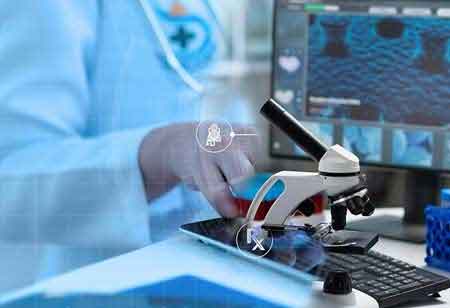Thank you for Subscribing to Healthcare Business Review Weekly Brief

Telemedicine and Technology
Healthcare Business Review
Introduction:
In fact the advanced technologies in terms of increased capacities of data compilation, velocity in transmitting information worldwide, development of software that assist the physician to make a diagnosis and advise a treatment offered a new way of practising medicine and managing the health of patients both remotely and safely. This new model poses new challenges in terms of medical responsibilities and liabilities that are yet to be resolved, as well as many other problems that need to be confronted. Without any doubt the COVID-19 infection did bring the light on this model and accelerated our understanding and made us focus on this way of treating patients.
1. Equipment:
It is of importance to dispose of the right trusted equipment that can be properly connected to the terminal transmitting the data to the desk of the treating doctor. Vital signs respiratory rate, ECG, blood pressure, pulse, oxygen saturation, glucose blood levels are some of many other biological measurements that are possible to monitor remotely. This is completed by bedside evaluation by a nurse or trained medical assistant, or the doctor himself by an in-person visit to the clinic or hospital, radiological examination, blood extractions and clinical evaluation to complete the clinical picture in order to make the right diagnosis and provide accurate treatment. Physiotherapy equipment to lead the patient to physical independence as well.
Health insurance should be a partner in this area of providing care. Who should invest in the equipment which is expensive as well as the communication platform that should have a special configuration to transmit the information, no to mention the effect on the price of the provided care in terms of consultation and the special training health professionals should have. All these questions need an answer that necessarily will come with discussions and health authority guidelines.
2. The medical team:
a/The doctor is the basis of the model of care. He bears the responsibility of patient care. This professional should have the normal accreditation in his district as well as a training in this type of medicine. He should dispose of direct access to ambulance services and admission privileges In case of emergency. He should have all normal credentials to allow him to practice in his field either he is in general practice, family doctor, a cardiologist or any other speciality.
b/The nurse too. This nurse should have her licensing and a training in this model of providing care. She is essential in monitoring clinically and transmitting the correct information to the doctor by in-person visits or staying at the bedside of the patient depending on the degree of care provided. This applies too to the medical assistant.
c/ The physiotherapist essential in rehabilitation programs at home responsible for improving the physical condition and leading to dependency as much as possible.
d/ Laboratory services should be available upon request with mobile blood extractions and all needed services.
e/ Imaging services should mobile and possible at the bedside of the patient. This can be done by a trained technician providing these services at home and data sent to the radiologist for assessment.
f/Emergency services should be available 24/7 to ensure the safety of the patient in case his condition needs acute care in a specialized hospital.
3. The Patient:
We should have and construct confidence of the patient with this model. It is new relatively but our actual patients are more or less into social media and got used to get information social, economic, political, and medical as well. The patient should be used not to have the doctor in person but through a screen, to trust the health worker on his bedside to operate some of the equipment and rely on the output of information it gives. The patient training is already on through unlimited number of sites that give information and training where some of them are run by none or bad commercial professionals and here too we need to create a trusted web where the patient can go and receive trusted information. We can imagine the interference of legal professional bodies like the Department of Health of the professional medical bodies to regulate on medical sites and avoid fake news as might say M. Trump!
Conclusion:
This is a medical model to be built. It raises many issues while it solves others. Before the telescope we used to see thousands of stars in the sky on which we ignored almost everything. With the advent of the telescope, a great invention, we are seeing millions of stars on which we still ignore everything. Advances might create more ignorance than knowledge but it means that we are on the way to better understanding.









